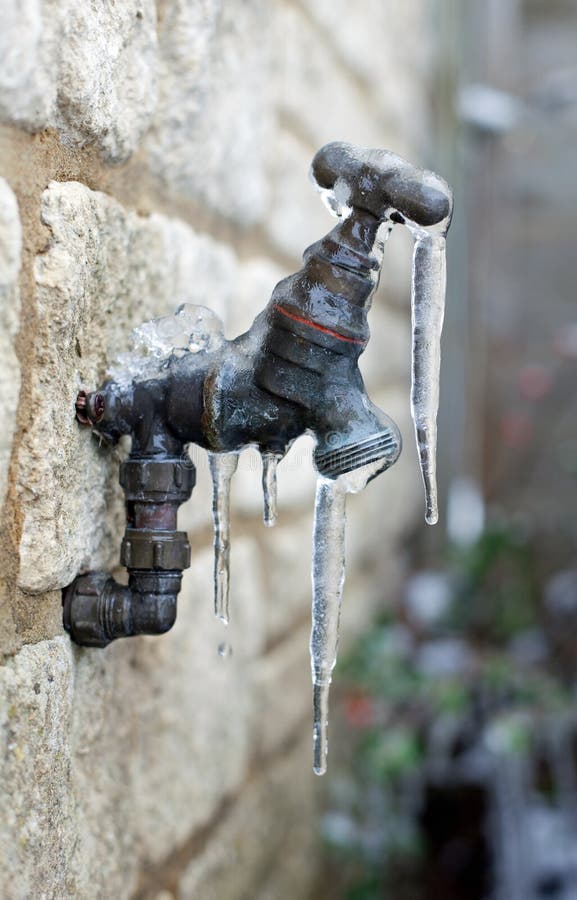Listed here underneath you might get lots of good quality data with regards to 6 Ways to Prevent Frozen Pipes.

Winter can ruin your pipes, especially by freezing pipelines. Here's exactly how to prevent it from occurring and what to do if it does.
Introduction
As temperatures decrease, the threat of icy pipes boosts, possibly bring about pricey repair work and water damages. Recognizing exactly how to avoid icy pipelines is important for home owners in cool climates.
Avoidance Tips
Shielding at risk pipelines
Wrap pipes in insulation sleeves or use heat tape to safeguard them from freezing temperature levels. Focus on pipes in unheated or exterior areas of the home.
Heating methods
Maintain indoor rooms appropriately warmed, specifically locations with pipes. Open up closet doors to enable warm air to circulate around pipes under sinks.
How to identify frozen pipes
Look for decreased water flow from taps, uncommon smells or noises from pipelines, and noticeable frost on subjected pipelines.
Long-Term Solutions
Structural changes
Think about rerouting pipelines far from outside wall surfaces or unheated areas. Include additional insulation to attics, basements, and crawl spaces.
Upgrading insulation
Buy top quality insulation for pipelines, attic rooms, and walls. Correct insulation assists preserve regular temperatures and lowers the threat of frozen pipelines.
Protecting Outdoor Pipes
Garden hoses and outside taps
Detach and drain pipes garden hose pipes prior to wintertime. Mount frost-proof faucets or cover exterior taps with shielded caps.
Comprehending Icy Pipelines
What creates pipelines to ice up?
Pipes freeze when exposed to temperature levels below 32 ° F (0 ° C) for extended periods. As water inside the pipelines ices up, it increases, putting pressure on the pipe walls and potentially causing them to rupture.
Threats and problems
Frozen pipes can lead to water supply interruptions, property damages, and expensive fixings. Burst pipes can flood homes and trigger considerable structural damage.
Indications of Frozen Pipes
Recognizing icy pipelines early can prevent them from bursting.
What to Do If Your Pipes Freeze
Immediate actions to take
If you think frozen pipelines, maintain taps available to alleviate stress as the ice thaws. Make use of a hairdryer or towels soaked in hot water to thaw pipelines slowly.
Final thought
Protecting against icy pipes requires aggressive procedures and fast actions. By recognizing the causes, indications, and safety nets, property owners can protect their pipes during cold weather.
5 Ways to Prevent Frozen Pipes
Drain Outdoor Faucets and Disconnect Hoses
First, close the shut-off valve that controls the flow of water in the pipe to your outdoor faucet. Then, head outside to disconnect and drain your hose and open the outdoor faucet to allow the water to completely drain out of the line. Turn off the faucet when done. Finally, head back to the shut-off valve and drain the remaining water inside the pipe into a bucket or container. Additionally, if you have a home irrigation system, you should consider hiring an expert to clear the system of water each year.
Insulate Pipes
One of the best and most cost-effective methods for preventing frozen water pipes is to wrap your pipes with insulation. This is especially important for areas in your home that aren’t exposed to heat, such as an attic. We suggest using foam sleeves, which can typically be found at your local hardware store.
Keep Heat Running at 65
Your pipes are located inside your walls, and the temperature there is much colder than the rest of the house. To prevent your pipes from freezing, The Insurance Information Institute suggests that you keep your home heated to at least 65 degrees, even when traveling. You may want to invest in smart devices that can keep an eye on the temperature in your home while you’re away.
Leave Water Dripping
Moving water — even a small trickle — can prevent ice from forming inside your pipes. When freezing temps are imminent, start a drip of water from all faucets that serve exposed pipes. Leaving a few faucets running will also help relieve pressure inside the pipes and help prevent a rupture if the water inside freezes.
Open Cupboard Doors
Warm your kitchen and bathroom pipes by opening cupboards and vanities. You should also leave your interior doors ajar to help warm air circulate evenly throughout your home.

I am very serious about Prevent Frozen Pipes and I hope you appreciated the blog entry. I beg you pause to share this content if you enjoyed reading it. We value your readership.
Recurring Service Plans